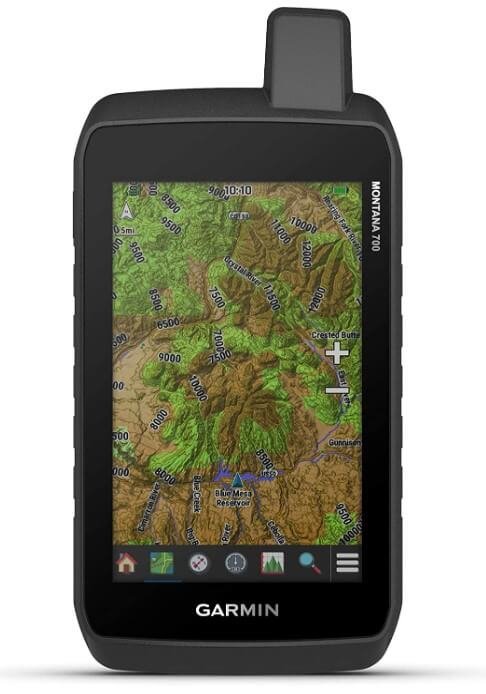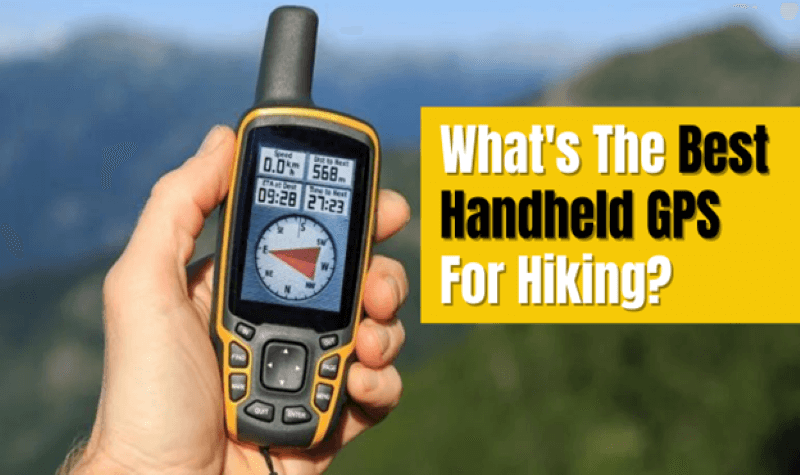Summer is in full swing, which means one thing for outdoor enthusiasts: hiking season! If you’re looking for a new handheld GPS to help you navigate the trails or are just curious about what’s available on the market, this article is for you. We’ll look at what you need to know to find the right GPS for hiking and we’ll discuss what to consider when making your purchase. So, whether you’re a seasoned pro or a beginner hiker, read on to find out which handheld GPS is right for your needs! You might be interested in checking out our top ” 6 Best Handheld Garmin GPS! ” To find the perfect option for your next outdoor excursion.
The Right GPS for Hiking- The Different Types
There are three main types of handheld GPS devices available on the market:
1. Traditional Handheld GPS Models:
These models have been around for many years and are designed to provide basic navigation capabilities in a small and portable package. Some of these units have advanced mapping software and can display your current location directly on topographic maps. However, they tend to be expensive, and the maps can be hard to read outdoors due to glare from sunlight or water droplets.
2. Smartphone Apps:
Smartphones are powerful little devices that you likely already carry with you everywhere you go anyway, so it makes sense that hiking apps are abundant for them! The app market is highly competitive, so most apps offer detailed trail information, real-time weather updates, and GPS functionality. However, smartphones are fragile and not designed to withstand rugged outdoor conditions. Additionally, most smartphone batteries will last only a few hours before recharging, which isn’t ideal for hiking for an entire day or overnight, but the biggest problem is that smartphones will not receive the signal in many remote areas which makes it a safety concern.
3. Dedicated Handheld GPS Devices:
These devices have the best of both worlds! They offer highly detailed trail information and excellent battery life in a small and lightweight package. The Best GPS devices are built to withstand harsh outdoor environments. Although many models come with preloaded maps, it’s also possible to purchase additional maps for your handheld device, depending on where you like to hike.
What Things to Consider When Buying the Best GPS for Hikers
Now that we’ve looked at the different types of handheld GPS devices available on the market, let’s discuss what to consider before making your purchase:
1) Mapping Capabilities:

One of the most important things to consider when purchasing a handheld GPS device is its mapping capabilities. If you only plan to hike in one specific region, you’ll likely be fine with a basic model that comes with preloaded maps. However, if you like to hike in different areas or even travel to new places for your hikes, then you’ll need a unit with more advanced mapping capabilities. Many high-end models allow you to load additional maps via an SD card, which is extremely helpful if you want detailed topographic maps of an area.
2) GPS Position:
Most handheld GPS devices use a combination of signals from satellites and ground-based transmitters to determine your position. If you plan to hike in remote areas with no cellular reception or ground-based transmitter coverage, you’ll need a unit that uses only satellite signals. These units tend to be more expensive, but they offer much better coverage in remote areas.
3) Buttons Versus Touch Screen:
This is primarily a matter of personal preference, but it’s something to consider before purchasing. Many newer GPS devices have full-color touch screens that offer easy menu navigation. Although, some units even allow you to control them with voice commands. However, some hikers prefer the simplicity of physical buttons since they can be used without looking at the device, which can be helpful when you’re trying to keep your eyes on the trail ahead.
4) Magnetic Compass:
A magnetic compass is a helpful feature to have in a handheld GPS device since it can be used to orient yourself even if the GPS signal is lost. This can be useful in remote areas with no cellular reception or ground-based transmitter coverage.
5) Battery Life:
Another important consideration is battery life, as you don’t want to be stuck on the trail with a dead GPS unit! Most traditional handheld GPS units will last for around 10 hours on a single charge. In contrast, smartphone apps will typically only last for a few hours before recharging. If you’re planning on hiking for extended periods, you’ll definitely want to opt for a model with excellent battery life. Many dedicated handheld GPS devices use AA or AAA batteries, which can be easily replaced if necessary.
6) Durability:
If you often hike in rugged terrain or extreme weather conditions, you’ll need to ensure that your handheld GPS device is up for the challenge! Most models are built to be highly durable and waterproof, but it’s still good to check the specifications before purchasing. Additionally, make sure that any additional maps you plan on loading onto your device are also suitable for your hiking area!
7) Other Useful Features:
Other things to consider when purchasing a handheld GPS device include the size and weight of the unit. Whether or not it has a backlit screen for easy reading in lowlight conditions, and what type of sensors are included (such as barometric pressure and temperature). Additionally, some higher-end devices will have an altimeter feature which is helpful if you like to ascend high peaks!
8) Customer Reviews:
Before making your purchase, it’s always a good idea to check customer reviews. Customer reviews will give you an idea of what the unit is like in real-world conditions. You can find dozens of reviews for most handheld GPS devices online, with many models receiving hundreds or even thousands of positive ratings. Amazon is a great place to start but be sure also to check out user reviews on manufacturer websites!
FAQs:
Are smartphone apps a good alternative to handheld GPS devices?
It depends on what you’re looking for in a GPS device. Smartphone apps are typically much more affordable than dedicated units, but they don’t have all the same features. And also, they aren’t built to be as durable. Additionally, smartphone apps rely on cell networks which can sometimes be unreliable, especially in remote areas or during periods of bad weather. If you only plan on hiking occasionally and don’t need advanced mapping tools, then a smartphone app may be a good choice. But if you hike frequently or travel off-trail, it’s probably best to invest in a dedicated handheld GPS unit.
How do I choose hiking maps for my handheld GPS?
This will depend on several factors, including the type of hiking you do and the terrain you travel through. There are a number of different types of maps available, including topographic maps, trail maps, and road maps. If you’re going to be hiking in remote areas or off-trail, then a topographic map is probably your best choice, as it will show elevation changes more accurately.
Trail maps are perfect for more casual hikers who stick to well-marked paths. At the same time, road maps can come in handy if you just want to get from point A to point B. It’s also important to consider where you plan on purchasing your map. Make sure that any digital versions are suitable for outdoor use before purchasing!
How do I load my own digital maps onto my handheld GPS?
This process will vary depending on the make and model of your GPS unit. But typically, you can just connect your device to your computer via a USB cable and then drag and drop the files into the appropriate folder. Most units support a variety of different file formats, but it’s always a good idea to check the specifications before purchasing any digital maps. Once you have the maps loaded onto your device, you may need to activate them in the settings menu before they are visible on the screen.
Additional Resources
If you are looking for more tutorials, walkthroughs and troubleshooting about camping and enjoying the outdoors, here are some additional posts to check out:
Conclusion
When it comes to choosing “6 Best Handheld Garmin GPS!” for your hiking needs, there are many different factors to consider. You’ll need to think about what features are most important to you and whether a dedicated GPS device would be a better choice than a smartphone app. Once you’ve narrowed down your options, you can begin comparing specifications and reading online reviews until you find the perfect unit for your needs! Do you have any other tips on choosing the best handheld GPS for hiking? Please share them in the comments below!
But For Now… Have Fun and Be Safe.!

